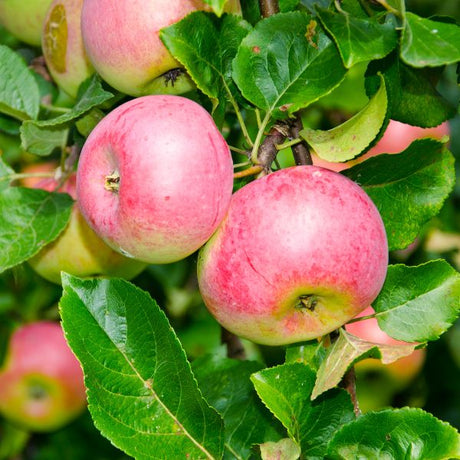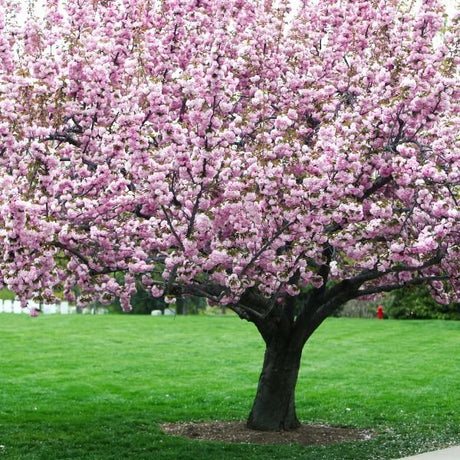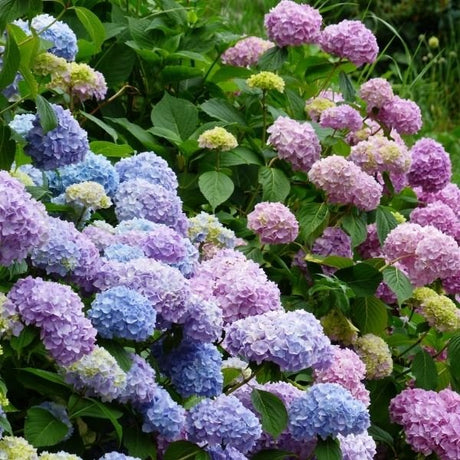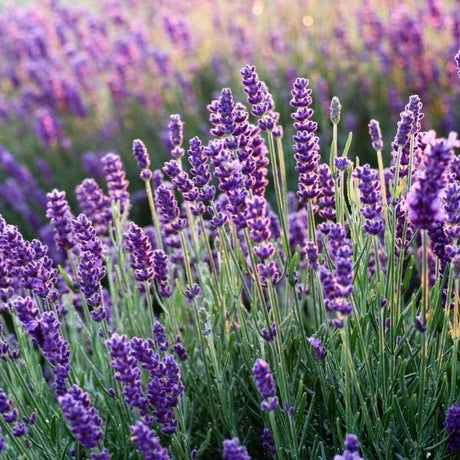USDA Organic Eastern Redbud Tree
Cercis canadensis
- Stay Protected with Plant Sentry ™
USDA Organic Eastern Redbud Tree - B&B (Balled & Burlapped) 12-14 Feet is backordered and will ship as soon as it is back in stock.
Plant Sentry™
Plant Sentry™
Plant Sentry is designed to protect both consumers and the nursery trade from invasive plant pests and diseases. Sites that display the Plant Sentry protection badge are protected from consumers buying and nurseries shipping material carrying invasive pests and diseases.
This proprietary eCommerce software prevents the shipment of a restricted plant to each state. The Plant Sentry system includes a shipment certification program. The Plant Sentry Compliance Officer works closely with NatureHills.com and each nursery or fulfillment center to ensure only compliant plants are sold to customers.
Click Here to learn more

Delivery and Shipping
Delivery and Shipping
Shipping
To obtain a more accurate shipment time-frame, simply enter your zip code in the “Find Your Growing Zone” box to the right. Our plants are grown all over the country and lead time on items may be different because of this. Once your order is placed, you will also receive the specific shipment time-frame information as part of your order confirmation. Once an item ships, you will receive shipment notification and tracking numbers, so you can follow along while your plant travels to your doorstep. We use FedEx, UPS, or USPS at our discretion.
Due to winter weather we have put a hold on shipping to the areas shown below in grey. You can still order now and we will ship the plant to you during an appropriate time for your zone.
Standard Shipping Rates
At Nature Hills we handle, package and ship the products you order with the utmost care to ensure healthy delivery. Shipping and handling charges are calculated based on the tables below. Please note that some items include an additional handling surcharge, these will be noted on the item's product page.
| From | To | S&H |
|---|---|---|
| $0 | $19.99 | $24.99 |
| $20 | $49.99 | $29.99 |
| $50 | $69.99 | $34.99 |
| $70 | $99.99 | $39.99 |
| $100 | $129.99 | $44.99 |
| $130 | $149.99 | $48.99 |
| $150 | $150+ | Approx 28% |
Click here to see our full rates
Understanding Plant Options
Nature Hills offers plants in two main formats:
- Container Plants: Grown in pots with soil, sized by container volume and plant age
- Bare Root Plants: Dormant plants without soil, sized by height measurements
Container Plant Sizes
Container sizes indicate plant age and growing capacity rather than liquid volume equivalents. Our containers follow industry-standard nursery "trade gallon" specifications, which differ from standard liquid gallon measurements.
Young Plants (6 months to 18 months old)
| Container Size | Actual Volume | Metric Equivalent |
|---|---|---|
| 2" x 2" x 3" | 0.18 - 0.21 dry quarts | 0.20 - 0.23 dry liters |
| 4" Container | 0.31 - 0.87 dry quarts | 0.35 - 0.96 dry liters |
| 4.5" Container | 0.65 dry quarts | 0.72 dry liters |
| 6" Container | 1.4 dry quarts | 1.59 dry liters |
| 1 Quart | 1 dry quart | 1.1 dry liters |
| 5.5" Container | 1.89 dry quarts | 2.08 dry liters |
Established Plants (18 months to 2.5 years old)
| Container Size | Actual Volume | Metric Equivalent |
|---|---|---|
| 2 Quart | 2 dry quarts | 2.2 dry liters |
| #1 Container | 2.26 - 3.73 dry quarts | 2.49 - 4.11 dry liters |
| 5" x 5" x 12" | 3.5 - 4.3 dry quarts | 3.85 - 4.74 dry liters |
Mature Plants (2-4 years old)
| Container Size | Actual Volume | Metric Equivalent |
|---|---|---|
| #2 Container | 1.19 - 1.76 dry gallons | 5.24 - 7.75 dry liters |
| #3 Container | 2.15 - 2.76 dry gallons | 8.14 - 12.16 dry liters |
Large Plants (3-5 years old)
| Container Size | Actual Volume | Metric Equivalent |
|---|---|---|
| #5 Container | 2.92 - 4.62 dry gallons | 12.86 - 20.35 dry liters |
| #6 Container | 5.25 - 6.01 dry gallons | 23.12 - 26.42 dry liters |
| #7 Container | 5.98 - 6.53 dry gallons | 26.34 - 28.76 dry liters |
Bare Root Plants
Bare root plants are sold by height from the root system to the top of the plant. Plants may exceed minimum height requirements.
Common Sizes:
- Trees: 1 foot, 2 feet, 3 feet, 4 feet, 5 feet, 6 feet
- Shrubs & Perennials: 1 foot, 18 inches, 2 feet
Important Notes
Container Volume Specifications
- Trade Gallon Standard: Our containers follow industry-standard "trade gallon" specifications established by the American National Standards Institute (ANSI Z60.1) for nursery stock
- Volume Variations: Actual soil volume may vary due to plant root systems and growing medium settlement
- Age Indicators: Container size primarily indicates plant age and maturity rather than liquid volume equivalents
Growing Conditions
- Plant size can vary based on variety and growing conditions
- Container size helps indicate plant maturity and establishment level
- Larger containers generally mean more established root systems and faster landscape establishment
Seasonal Availability
- Bare root plants are available seasonally when dormant
- Container plants are available throughout the growing season
- Specific varieties may have limited availability in certain sizes
Questions?
For questions about specific plant sizes or availability, please contact our plant experts who can help you choose the right size for your landscape needs.
Plant Highlights
USDA Organic Eastern Redbud Tree highlights at a glance!
Specifications
Specifications
-
Brand
-
Botanical Name
-
Growing Zones
-
Mature Height
-
Mature Spread
-
Sun ExposureFull Sun, Partial Shade
-
Moisture
-
Soil
-
Growth RateMedium
-
Flower Color
-
Fall Color
-
Pollinator Friendly
-
Pruning Time
-
Bloom PeriodEarly Spring, Late Spring
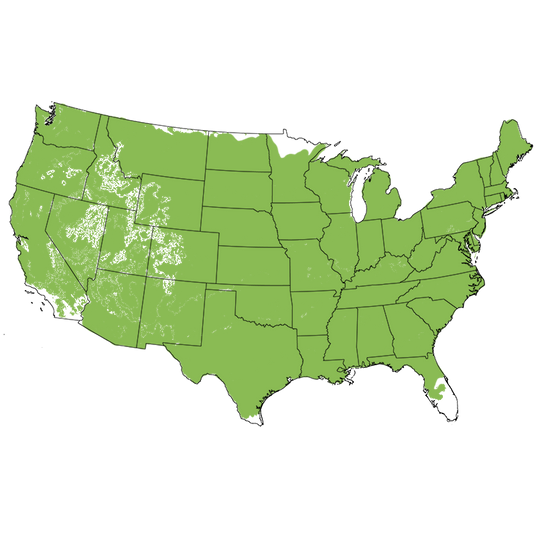
Growing Zones 4-9
A new springtime favorite! With this plant, you'll have a new appreciation for spring after seeing the bountiful, pink beauty that profusely shines day and night. The USDA Organic Eastern Redbud Tree (Cercis canadensis) has rosy pink blooms in the spring that are quite the head-turner!
This small, ornamental tree is a great choice. Native to most of the United States in one species or another, they are easy-care. They also bring many desirable features into the landscape. The beauty doesn't drop off either, in the summer this tree is full of light green, heart-shaped foliage that eventually becomes a vibrant yellow coloration in the fall.
Grown from organic, pesticide, and GMO-free seed, these trees allow your landscape throughout USDA planting zones 4 to 9 to remain chemical and safer for the environment! Your wildlife that eats the fall pea-like seedpods and early-emerging pollinators that sip the nectar in spring will benefit greatly!
Landscape Application:
Garden designers rely on Eastern Redbud's flower power. They use this tree as the main attraction in the Spring Garden. Why not follow their lead?
You'll love the contrast between the fluorescent Redbud flowers and the steady tones of the evergreen foliage. Underplant your tree with spring bulbs, small evergreen shrubs, and a few summer flowering shrubs to create a year-round display.
This breathtaking tree absolutely shines as a specimen plant where it can freely spread out and pull everyone into its dreaminess. You're not the only one going crazy for this incredible tree because even the birds and butterflies will be buzzing 24/7 for its sweet, magenta buds!
You can also plant this tree into the mix of your garden where it will be sure to make those dull spots disappear with its enchanting beauty. Wonderful naturalizing and woodland trees, a bit of larger tree canopy shade won’t bother these trees!
These are a great choice for both home gardens and commercial plantings. They'll do very well in median parking strips. Use them as street trees along walkways or in park settings. As you can imagine, Eastern Redbud is a premier choice for native landscapes or native restoration projects. Include them in your garden border plantings or marching along property lines.
For a large hedge where the canopies touch, plant them 6 - 8 feet apart on center. You'll measure from the center of one to the center of the next. Expand that spacing from 10 - 12 feet apart to establish individual trees.
Train the Eastern Redbud as a single-trunk tree or buy a multi-trunk clump for a more natural look. Try one at the corner of your house to anchor your foundation planting. Use 2, 4, or 6 - however many you have room for - on either side of a driveway to create a magnificent allée. What a treat in spring!
- Rosy Pink Springtime Buds
- Heart-Shaped, Light Green Foliage
- Adored by Birds & Butterflies
- Vibrant Yellow Fall Foliage
- Hardy Native Tree - Grown From Organic Seed Sources
- Go-To Specimen Tree, Woodlands, Naturalizing & Showy Ornamentals
#ProPlantTips for Care:
Give your USDA Organic Easter Redbud Tree the chance to grow to its fullest potential of 30 feet tall and 25 feet wide by planting in full sun to partial shade with rich well-drained soil. Provide regular consistent water access and a boost of spring fertilizer for flowering trees.
Surround the base of the tree with mulch to ensure even moisture and to protect your Eastern Redbud from nasty pests and diseases. Not to mention the dramatic difference it makes in the overall appearance of the colorful tree. Prune when needed in the spring as soon as the flowers have finished putting on their show.
- Best in Full Sun or Partial Shade
- Well-Drained Soils
- Moderate Moisture Needs
- Prune Immediately After Flowering
- Easy To Care For
- Deer Don't Prefer the Taste
Sit back and let this flawless tree make your day with its beauty by ordering your very own today! Order your USDA Organic Eastern Redbud Tree today from NatureHills.com!
Single Stem, Multi Stem, Shrub Form, Oh My!
Before you buy, make sure you know what you’re getting! Single stem, multi stem and shrub forms are different so read a bit about which we’re currently offering below.
Single Stem:
These are plants that have one stem coming from the ground. Plants can also be considered single stem when lower branches are removed to raise the height of the branching. Sometimes, you will hear a single stem referred to as Tree Form.
Multi Stem:
These are plants with 2 or more stems planted together in the ground in close proximity to form a clump. There are times multi stems are formed by a tree that branches at the soil line with more than one main stem.
Shrub Form:
These are bushy plants with many stems and branching close to the ground. They are referred to as shrubs or bushes and are often shorter than their tree forms.



